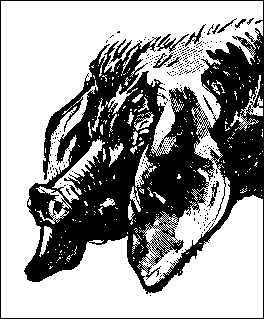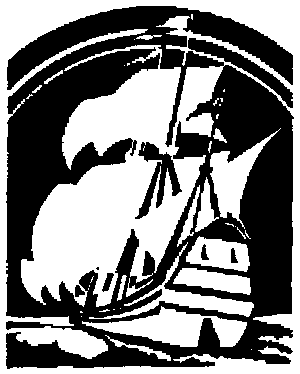Santo Cilauro, et. al.
(Overlook Press
141 Wooster
New York City 10012)
This luscious guide comes complete with photographs, history, passport information, sections on theatre, arts, and music, and current exchange rates --- dollars vs. strubls and qunts.
Molvanîa is a singular destination, both because of its history, its people, its customs, and the simple facts of life in this amazing mountain land. For instance, this on electrical power, "which is available in all but the most outlying areas:"
- The electrical current is a rather unusual 37 volts ... [so] a transformer may be required.
Under a photograph of a sizeable cactus: "The fzipdat of serrated thistle is the floral emblem of Molvanîa, a sharply thorned cactus, traditionally thrown at Molvanîan brides."
- Its leaves have an astringent, bitter taste, making it a popular ingredient in local dishes.
 And next to a picture of a very old sow,
And next to a picture of a very old sow,
- The pig is generally considered the symbol of Molvanîa. Believed to be sacred by many, these animals may only be slaughtered Monday to Saturday. Pigs are widely used throughout the country for meat, milk and --- in remote areas --- companionship.
There are many unusual historical and factual subsections on each page. Under "The Age of Discovery," we find a sketch of a bearded man in Renaissance dress: "Svetranj is noted for being the birthplace of Molvanîa's most famous explorer, the legendary Jolp Trubazbor. On 13 June, 1468, Trubazbor and his brave crew fled Lutenblag with three sailing ships."
- It took them nearly a month to carry them over the mountains. But eventually they reached the Baltic Sea where they set off in search of the elusive East Indies. Inexplicably, they travelled north-east, ending up in Scandinavia where Trubazbvor put up a Molvanîan flag and declared that southern Sweden would henceforth be called Jotpland. Under a hail of arrows he and his crew retreated, sailing back across the Baltic Sea.
 "Weeks of raping, pillaging and plundering then ensued until Trubazbor was eventually forced to close the ships Games Room ... Eventually he made it back home where he was given a traditional hero's welcome --- he was robbed."
"Weeks of raping, pillaging and plundering then ensued until Trubazbor was eventually forced to close the ships Games Room ... Eventually he made it back home where he was given a traditional hero's welcome --- he was robbed."
In a box labeled Star Pupil:
"Lublova University's most famous son, Antonin Vllatvja, studied here from 1491 to 1495. A keen astronomer, he would gaze at the heavens through a long tubular device he called a tojlet rol."
- Vlatfvja has been widely acknowledged as the first scientists to hypothesize that, rather than the sun revolving around the earth, the earth in fact revolved around Neptune. ... [Later] he was called before a Papal inquiry in Rome where charges of heresy were dropped. He was, however, condemned to death as an idiot.
The drawings and photos are suitable to the text. Blurred out shots of rocky flatlands of stubble are, it is noted, "The Great Plains, recently granted UNESCO World Heritage status as a site of significant monotony."
Under a similar photograph (with goats): "Geographically, Molvanîa is a land of contrasts --- from its rocky, semi-barren hills to its rocky, semi-barren plains."
All in all, Molvanîa may soon be the place to visit for Americans seeking adventure, unusual vistas, and terminal diseases. The guide book offers maps, sidebars of comments from frequent visitors, and this unusual advice about the national currency:
- In time of war or economic crises garlic is often accepted as legal tender.
The guide notes that Molvanîa is far from backwards. There is a singular shot of a woman gesturing to what could be mistaken for an oven for bread-baking: "A worker at the Sjereso nuclear power plant proudly demonstrates the central reactor core, safely protected by her lead-lined shawl."
 Finally, for fun-seeking oral practitioners, the town of Vajana offers continuing lectures at the Museum of Medieval Dentistry. "One visitor reported it was..."
Finally, for fun-seeking oral practitioners, the town of Vajana offers continuing lectures at the Museum of Medieval Dentistry. "One visitor reported it was..."
- very informative but, at just over 150 minutes, perhaps a little too detailed, especially in the area of inflammatory gum disease.
And we almost forgot (we didn't want to distract you): The subtitle of the book is
It shows a merry peasant with several of his molars missing, photographed against a background of desert and sheer rock.